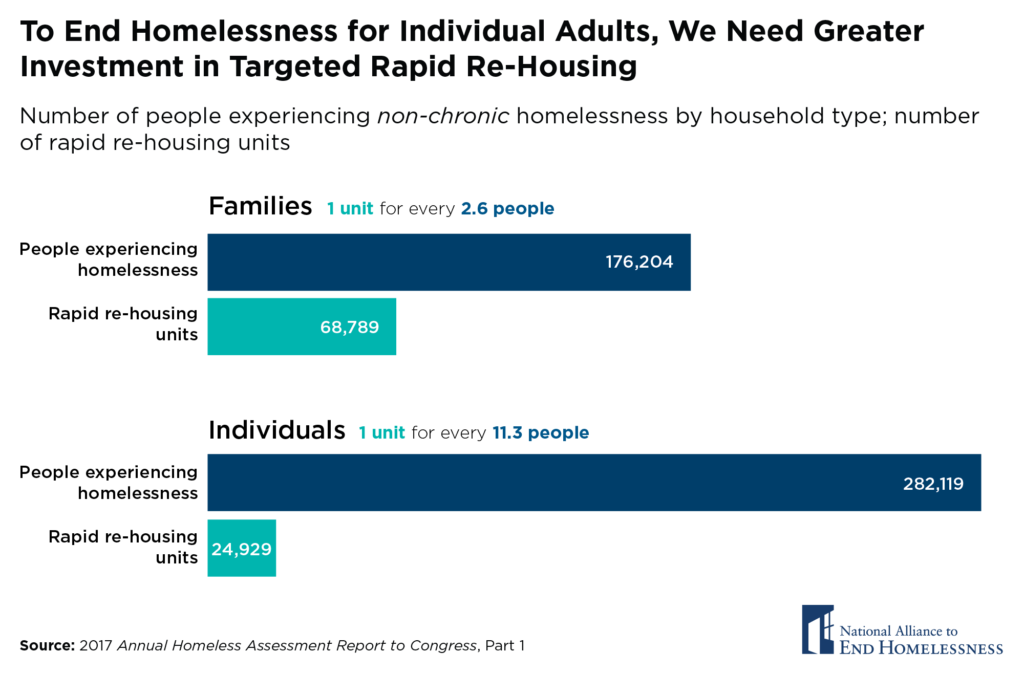Rapid re-housing (RRH) is a critical tool to help people experiencing homelessness get back into stable housing. RRH helps people who have been homeless find suitable rental units, pay initial rent and other costs, and connect to services so that they can remain stably housed.
Over the past 5 years, there has been significant investment in RRH for people in families — a major factor in reducing the number of homeless people in families by 21 percent.
But less progress has been made for homeless individuals, a population that has decreased by only 1 percent in the past five years. One likely reason is the failure to invest in RRH for individuals. In fact, while there are RRH resources for 1 of every 3 homeless people in families, there is only RRH for 1 of every 11 homeless individual adults.
Each year, the amount of RRH added for people in families outpaces the amount for individuals. To make strides among homeless individuals, a greater investment in RRH for this population is critical.

Note: RRH is most effective for people who are not chronically homeless (defined as disabled and homeless for long periods of time). That population is often better served by permanent supportive housing (PSH). Accordingly, this analysis focuses only on individuals and families who are not chronically homeless.
